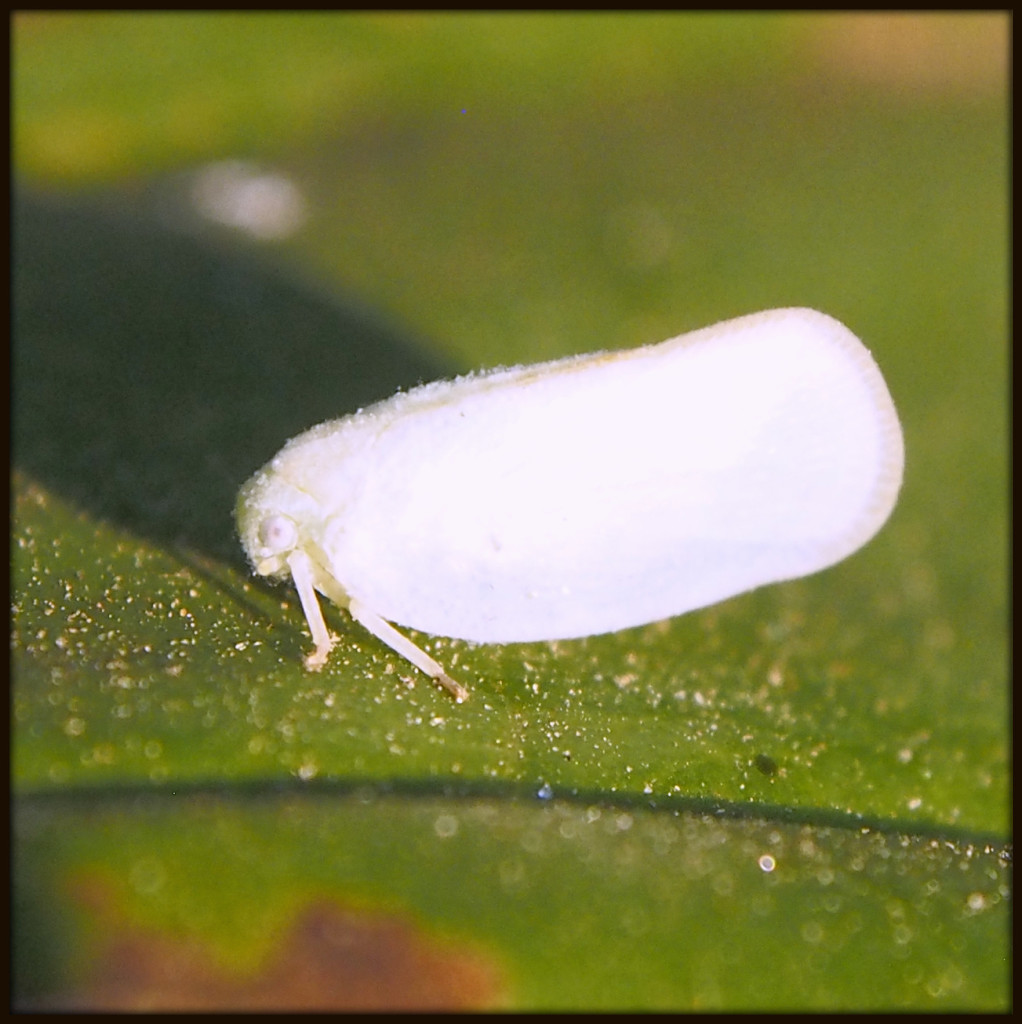I photographed this seed head of a Two-Flowered Cynthia (Krigia biflora) on my morning walk today. Even though the flower is past bloom, and most of the seeds have blown away, it enchants me still.
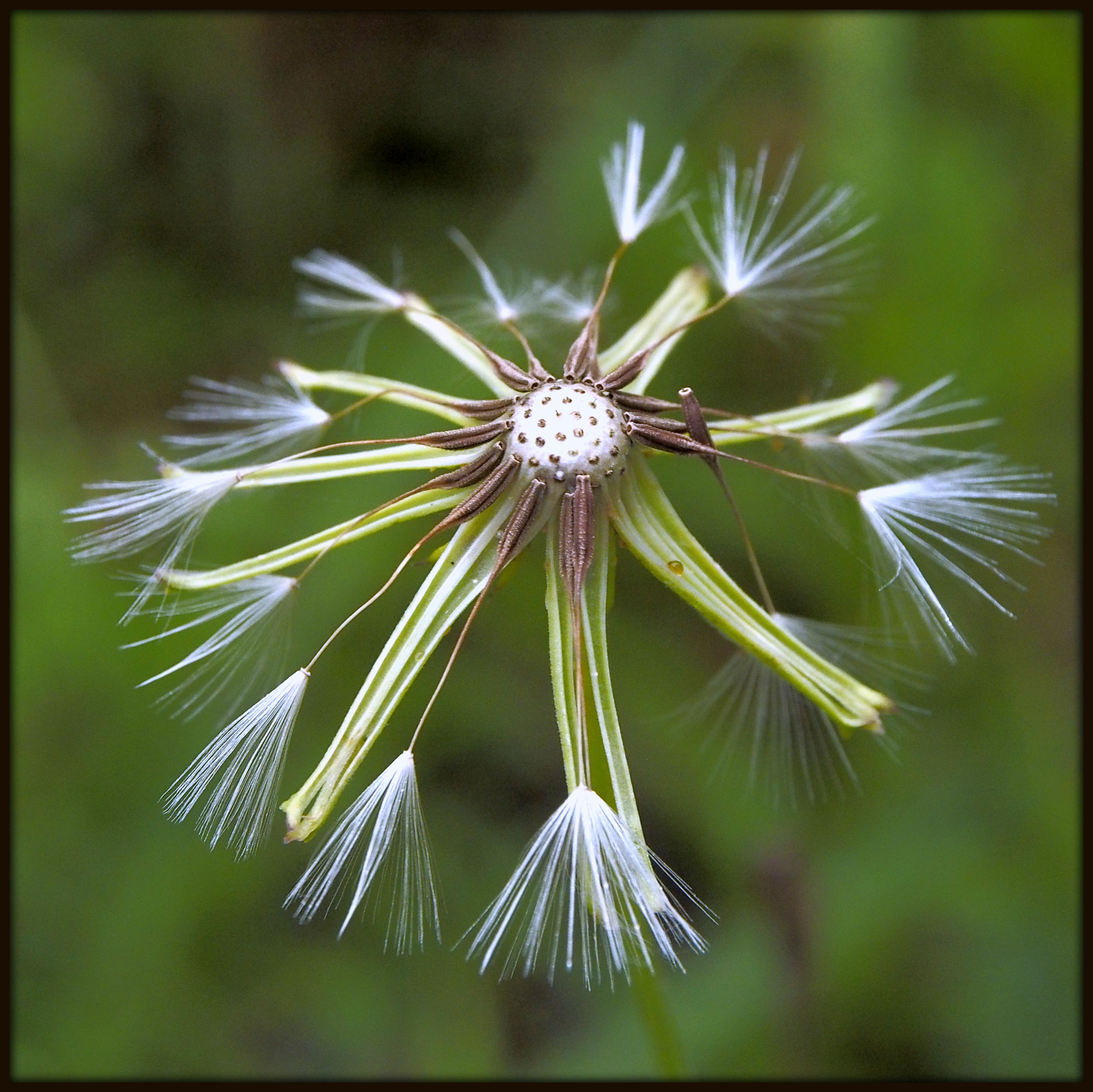
I photographed this seed head of a Two-Flowered Cynthia (Krigia biflora) on my morning walk today. Even though the flower is past bloom, and most of the seeds have blown away, it enchants me still.

On my morning fog-filled walk, I glimpsed at least half a dozen spiderwebs accentuated by the mist. This one was particularly striking: a chaotic tangle of webs above, and a carefully-constructed geometric web below — order and disorder coexisting in one image.
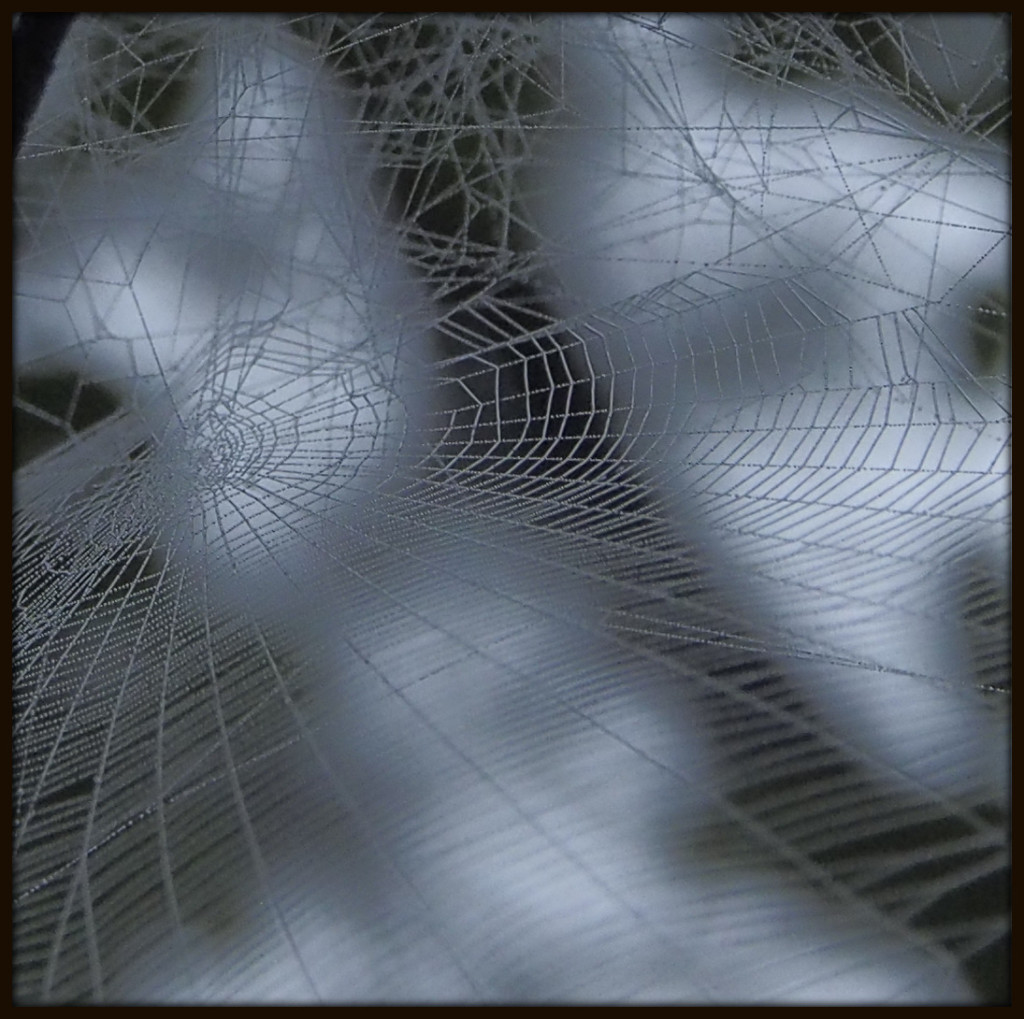
Last night’s sunset was spectacular, a pyrotechnic display of vivid colors and dramatic clouds. Dogs in tow and camera at home, I missed the opportunity to photograph it. So I am gratified that I actually got up this morning to the alarm (at an hour I won’t confess, since many are already en route to work by then) and decided to set out for Piney Woods Church Road despite overcast skies. The reward was a dense fog that offered marvelous photographic opportunities. The spider webs were festooned with misty droplets; looking through them to the trees beyond, they cast a diaphanous veil upon the scene.
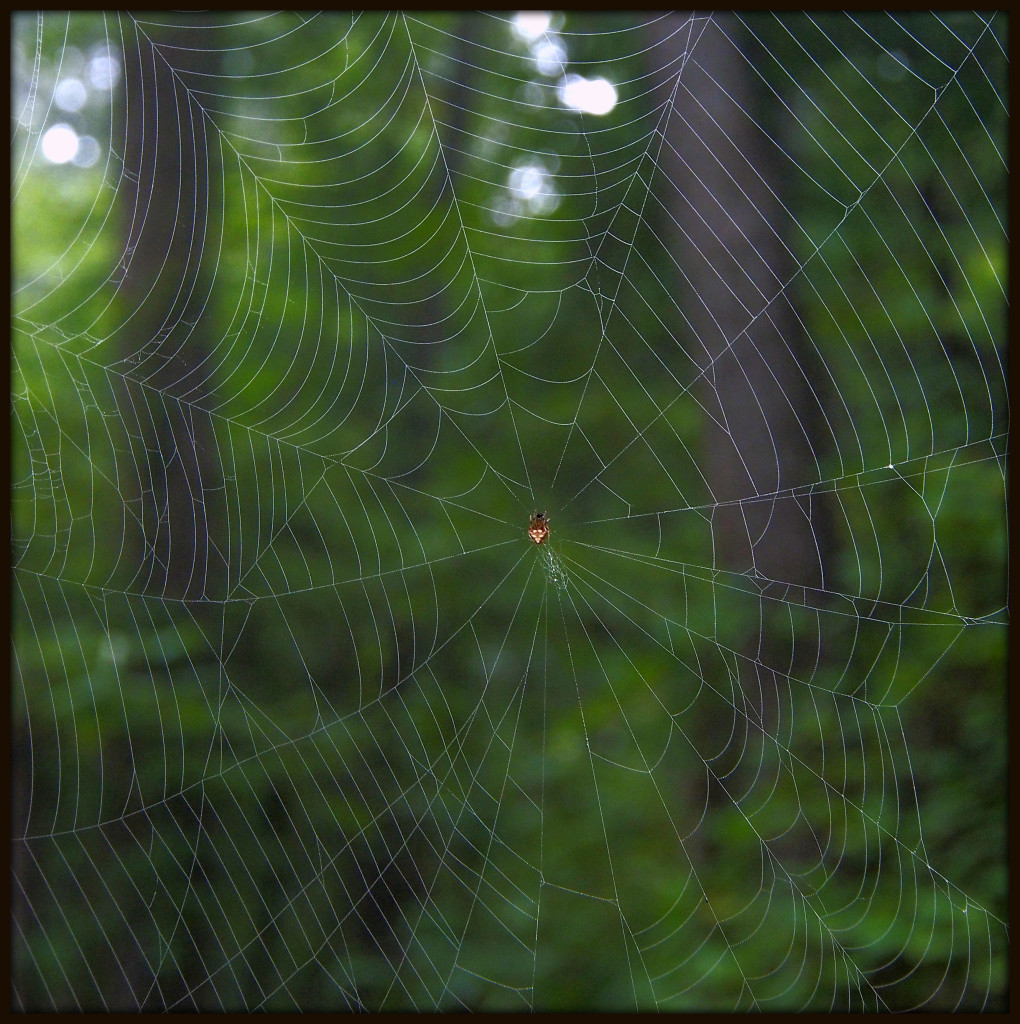
I ventured out to Piney Woods Church Road today between rainstorms. It was wonderful to see water everywhere — in shallow puddles on the roadbed, in droplets on leaves, and suspended from twigs like this one. The humidity was amazing — I dripped as much as the vegetation did — and quite a few insects were about, including an odd little treehopper or leafhopper that I am still trying to identify. Heading toward Hutcheson Ferry Road, I advanced into a mix of blue sky and clouds. Returning toward Rico Road, I headed into a gray cloud. The rain began while I was on Rico Road, just about to turn up my driveway. But for the most part it was a gentle, nourishing rain, a rarity in these Southern summer months.
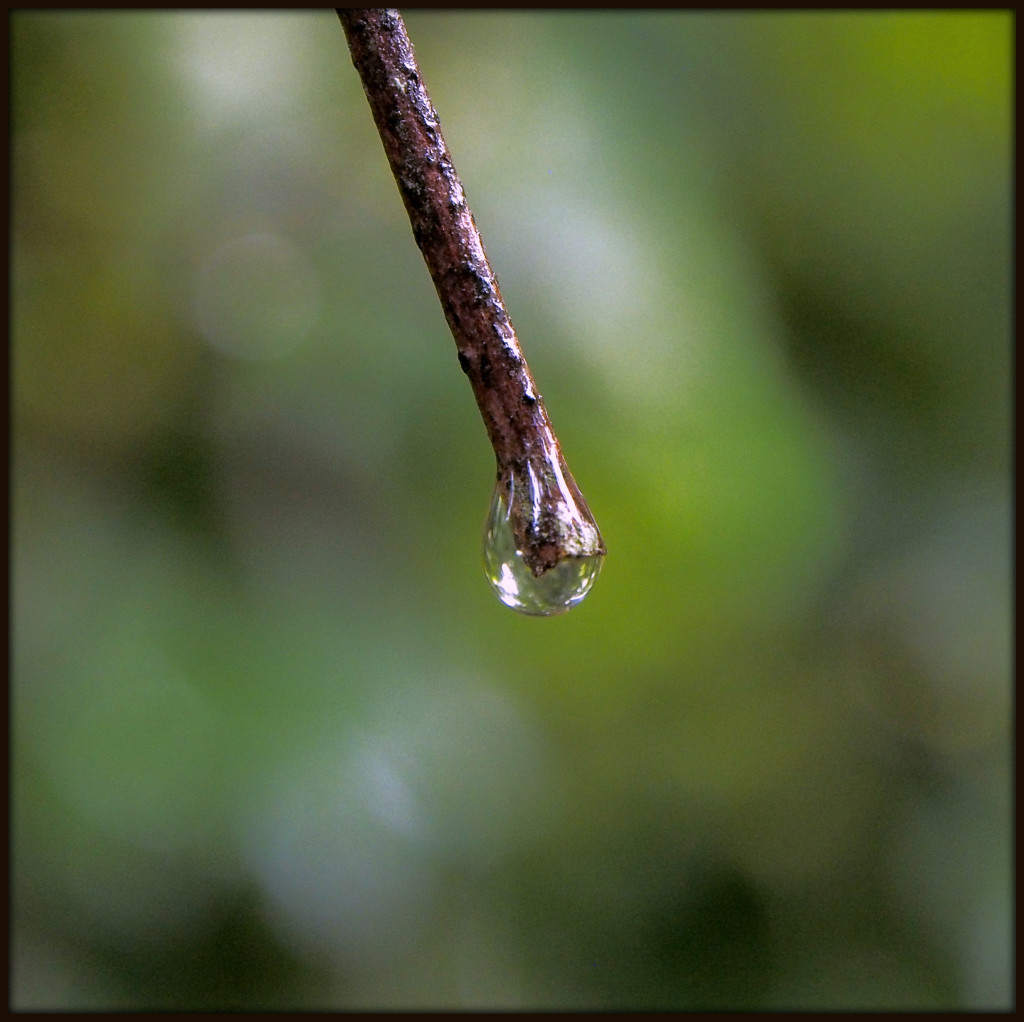
On my way to Piney Woods Church Road today, I paid more attention than usual to Rico roadside. Part of that was self-preservation — cars and trucks were flying by at near-lightning speeds, drivers miles away, ensconced in their own words. Part was because I was looking for a wildflower I had seen the day before, and even after locating it, I maintained my same level of attention to my surroundings. The result was a delightful discovery of a white and creamy yellow moth, about an inch long, motionless in plain view. Later I learned that this particular moth, a Delicate Cycnia or Dogbane Tiger Moth (Cycnia tenera) feeds on dogbanes and milkweeds as a caterpillar, taking into its body the same cardiac glycoside that makes Monarch Butterflies immune to predators. With little to fear from the skies, this particular moth did not so much as twitch, even when I drew my camera up close to take this photograph.
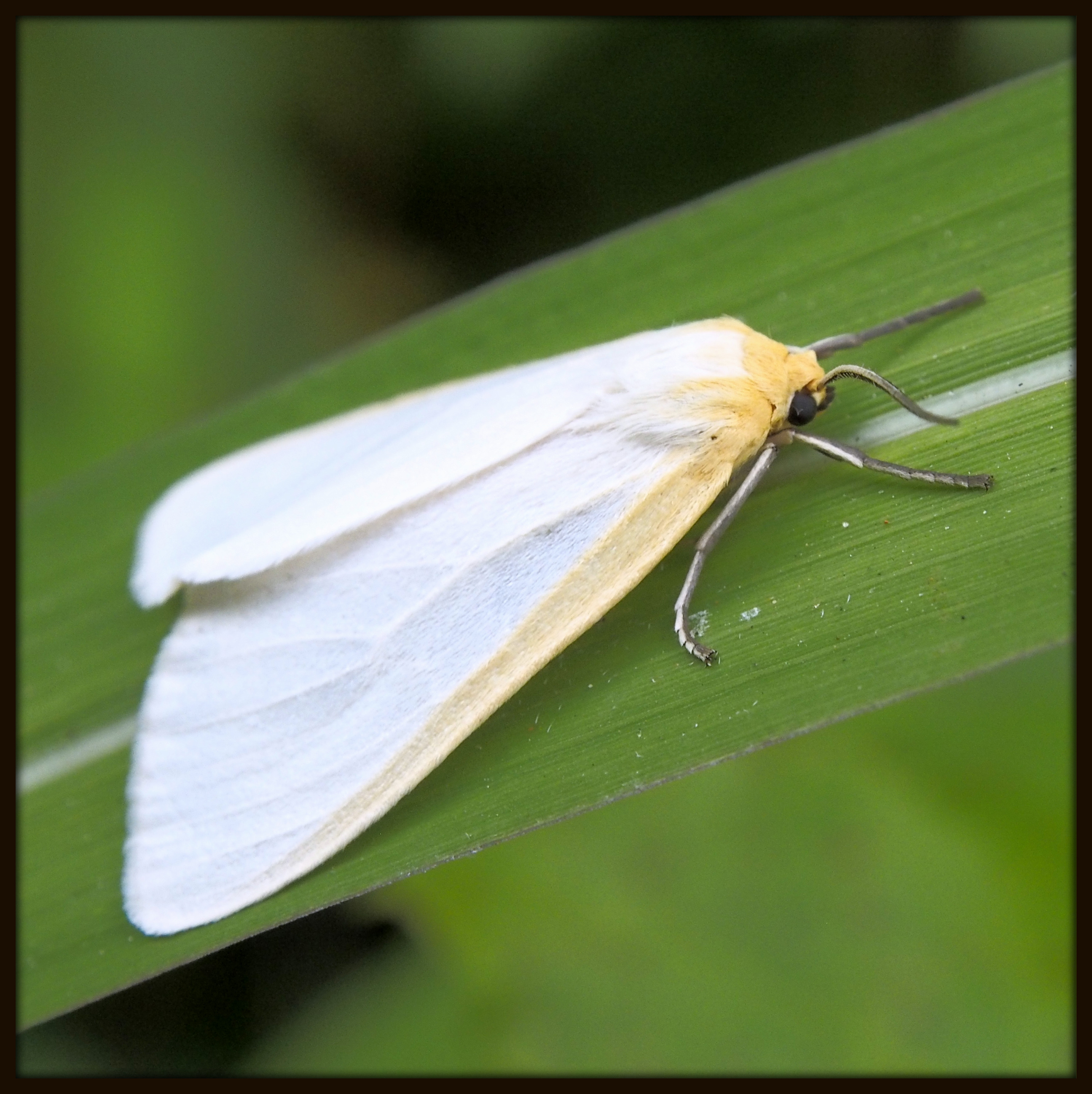
Over the past few months, since the trees have come into leaf along Piney Woods Church Road, I have been noticing Evidence for Elves. As I glance at the saplings of sweetgum and tulip poplar that line the roadway, I can quickly find a dozen leaves with holes in them, and fascicles (bundles) of loblolly pine needles suspended from each hole. Clearly, something has been putting a lot of energy into using pine needles as needles, poking holes in leaves with them and then letting them hang suspended, like a half-hearted attempt at an Andy Goldsworthy sculpture. The prosaic explanation, of course, is that the wind dislodges the pine needles from high up in the trees, and the velocity they obtain as the fall due to the acceleration caused by gravity is sufficient for them to pierce holes through any leaves they might encounter on their downward trajectory. The result is mysterious in a relatively subdued way — hardly akin to Stonehenge, and not overly photogenic, for that matter (the image below is my best attempt). Still, I find the windfall model entirely unsatisfying. It is far too prosaic. I much prefer the image of elves wandering the countryside, bored because no one believes in them or pays attention to them anymore, filling their spare afternoon hours by poking holes in leaves with bundles of needles, leaving their handiwork behind as a sign of their passage.
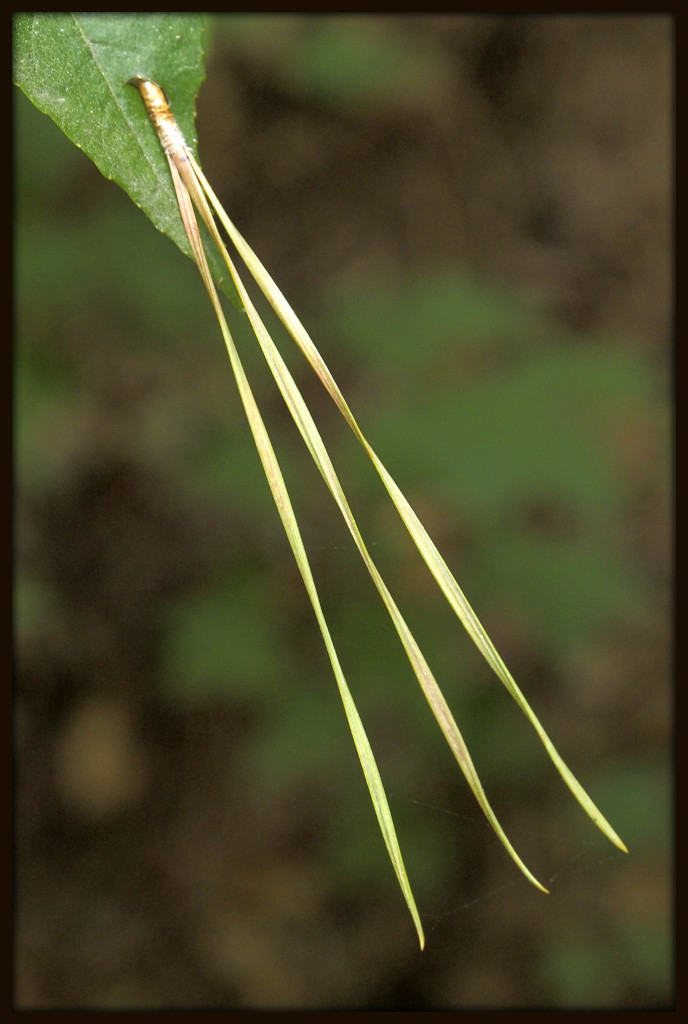
On my way back home today, I walked along the forest edge on Rico Road. Glancing down, I noticed a number of pale white flowers with a pinkish tinge. The flowers indicate a pea plant of some kind, but most of the roadside peas are flowering vines, which is not the case here. I searched my plant ID books and have sought help from experts via Facebook. So far, no answer. It is a lovely flower, though, and well worthy of a blog post.
The very next day, I was able to confirm that it is Spiked Hoary Pea (Tephrosia spicata), a native of the Southeast and fairly common along roadsides.
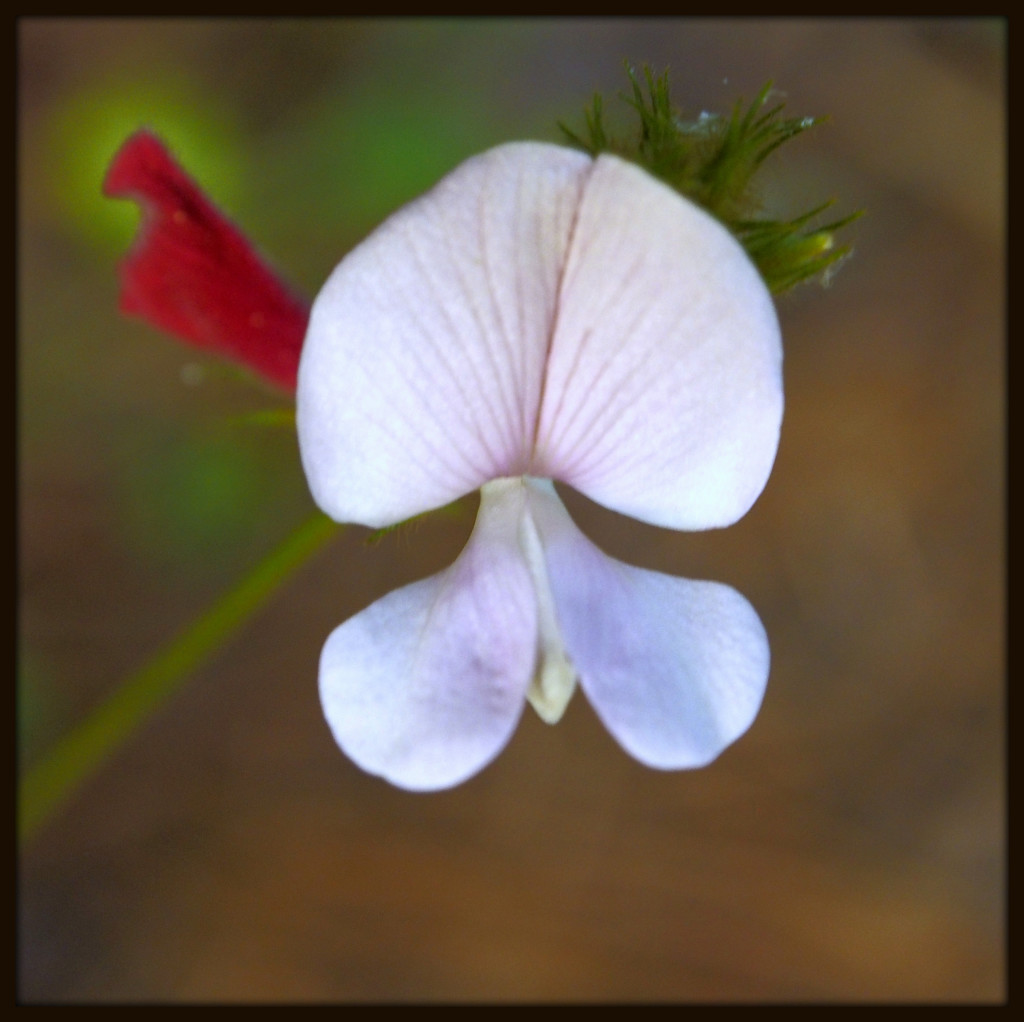
The large black and white Widow Skimmer (Libellula luctuosa) is unique among most dragonflies in Georgia, in that it often strays a considerable distance from open water. To see most dragonflies, it is necessary to visit a wetland, or perhaps a stream or lake edge. But Widow Skimmers are content with suburban backyards, provided there are good locations for perching and the opportunity to catch prey. About halfway down Piney Woods Church Road, just past the now-vacant cattle pasture, there is a road bank beside a ditch that has been allowed to grow wild. I met up with a Widow Skimmer there today, swooping from perch to perch, sometimes pausing to rest and other times racing onward. It circled the island of wild foliage a few times, and I managed to take its photograph, though some of my images were at such slow shutter speeds that they are in less than stellar focus. This one is among the best of the lot — not quite frame-worthy, but much better resolution than most of the Loch Ness Monster images out there. I will learn patience, and return, and try again on another day.
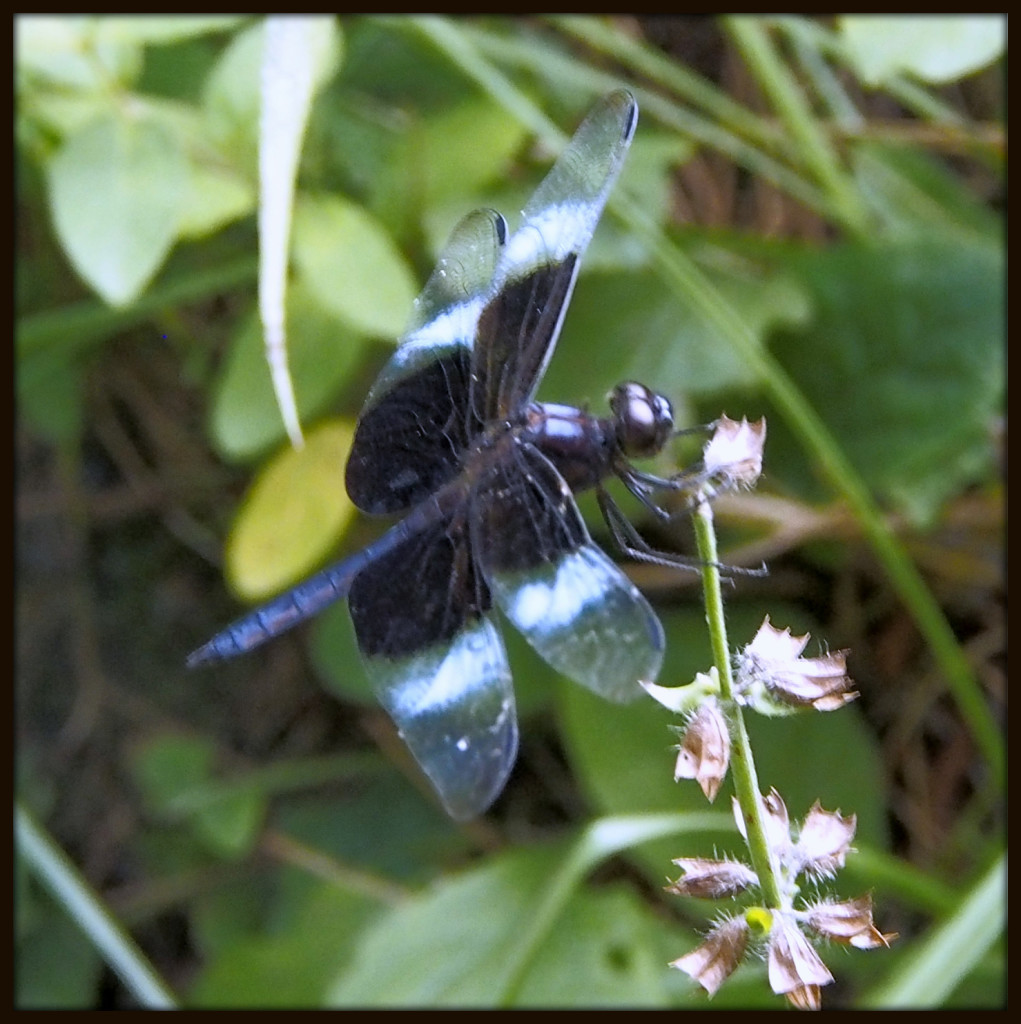
An old spiderweb, its occupant long gone, glows in the sunlight of a late summer afternoon along Piney Woods Church Road.
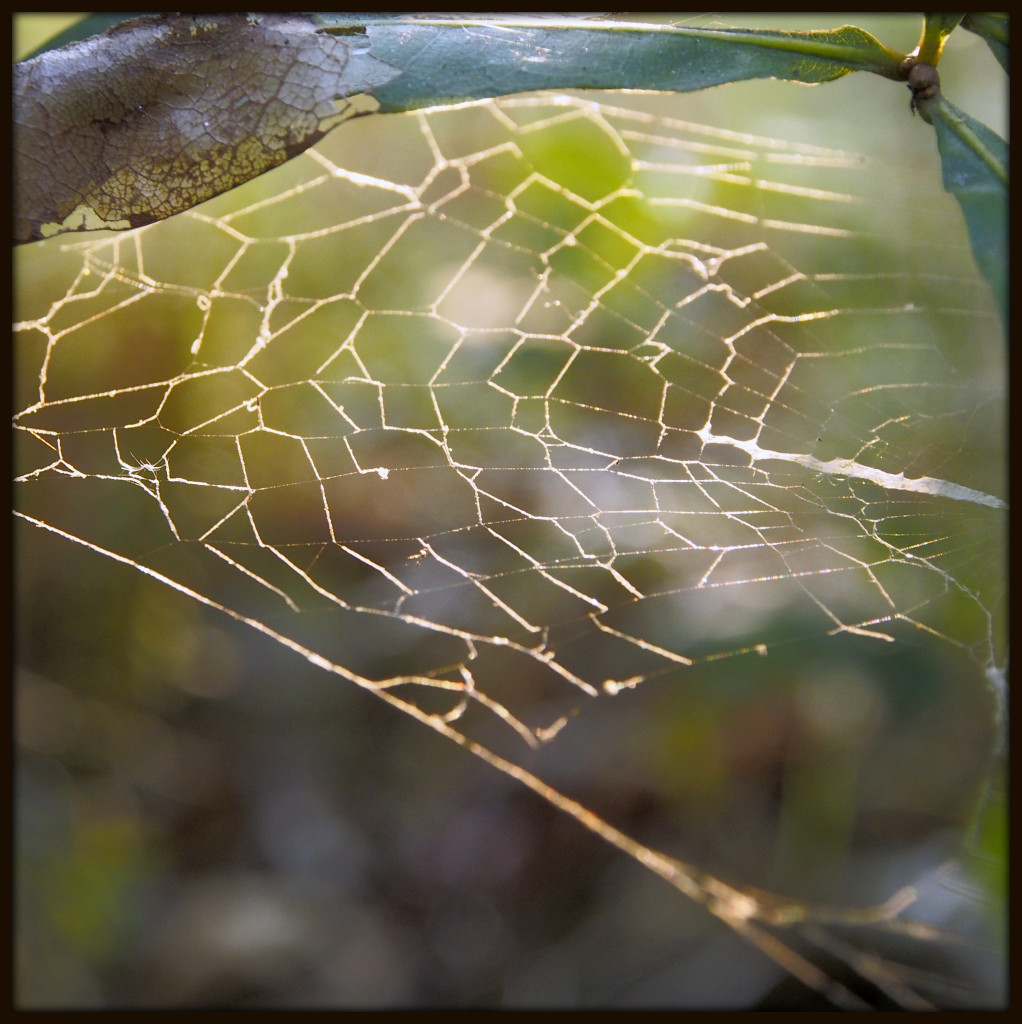
On my walk this afternoon, I glimpsed for the second time a Flatid Planthopper (Anormenis chloris), a tiny white critter less than a quarter inch in length. It is frightfully difficult to get them into focus (the first time was a complete failure) because of their blindingly white appearance and lack of distinctive features to focus on. Once onto my efforts with the camera, this particular planthopper made a halfhearted attempt and evasion, turning to face away from me. At last, I managed to get a few photos in focus. The Flatid Planthopper feeds on the sap of various shrubs and trees, though it is not considered a garden pest.
